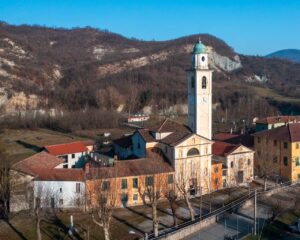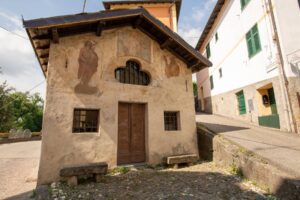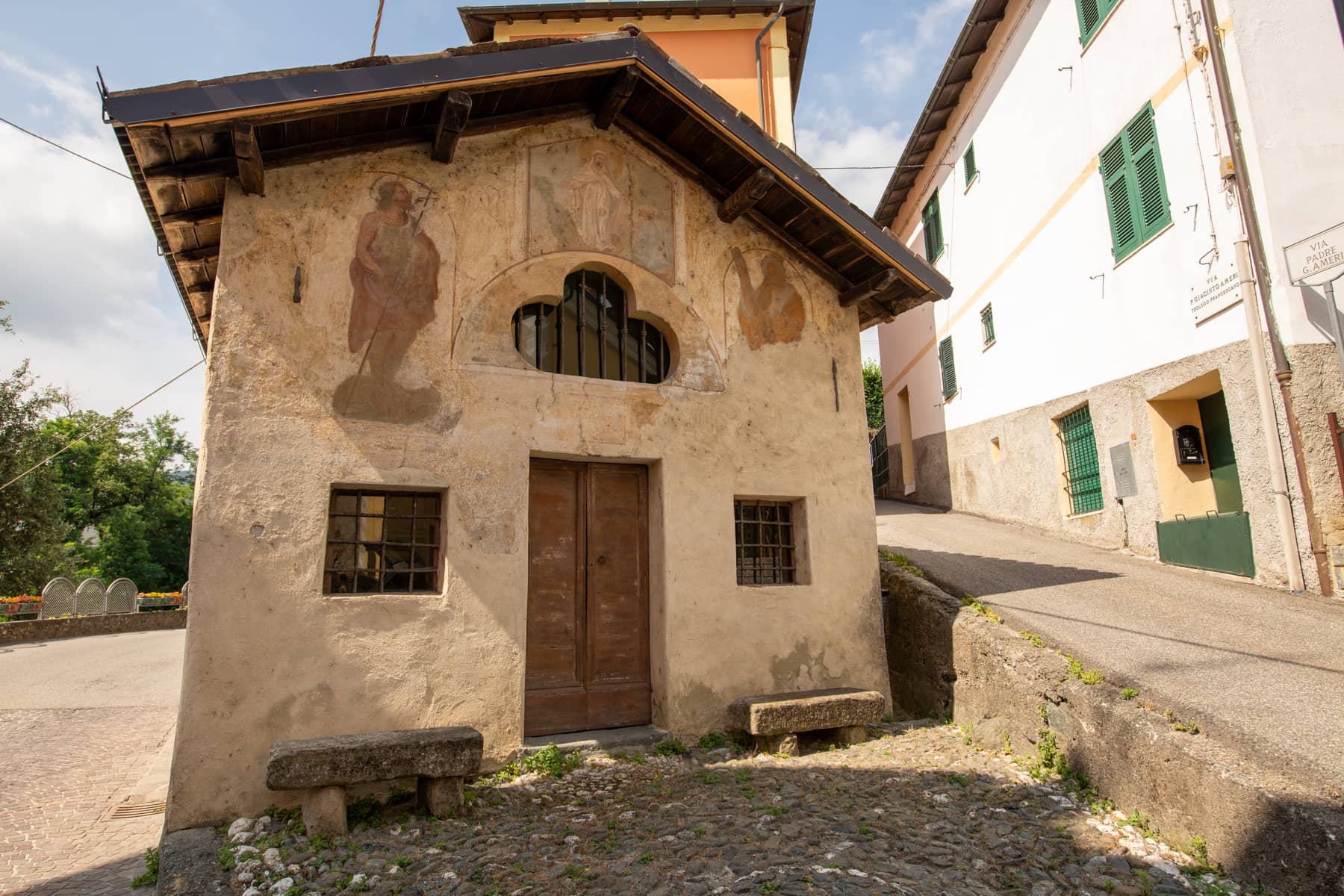The Municipality of Carrosio is located along the Via della Bocchetta, an ancient trade route between Genoa and the Po Valley. In Roman-imperial times its territory was included in the Libarna area, and faint toponymic traces are still preserved today.
In the second half of the 12th century, the territory was controlled by a fort, erected by the Marquises of Gavi, which was later dismantled in 1197. The hill where the structure once stood is still called “Casté”.
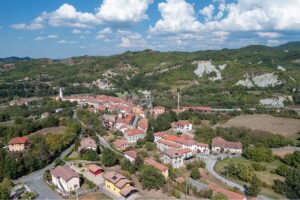
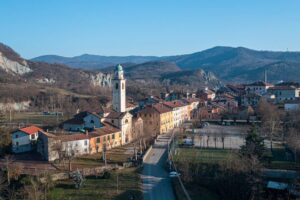

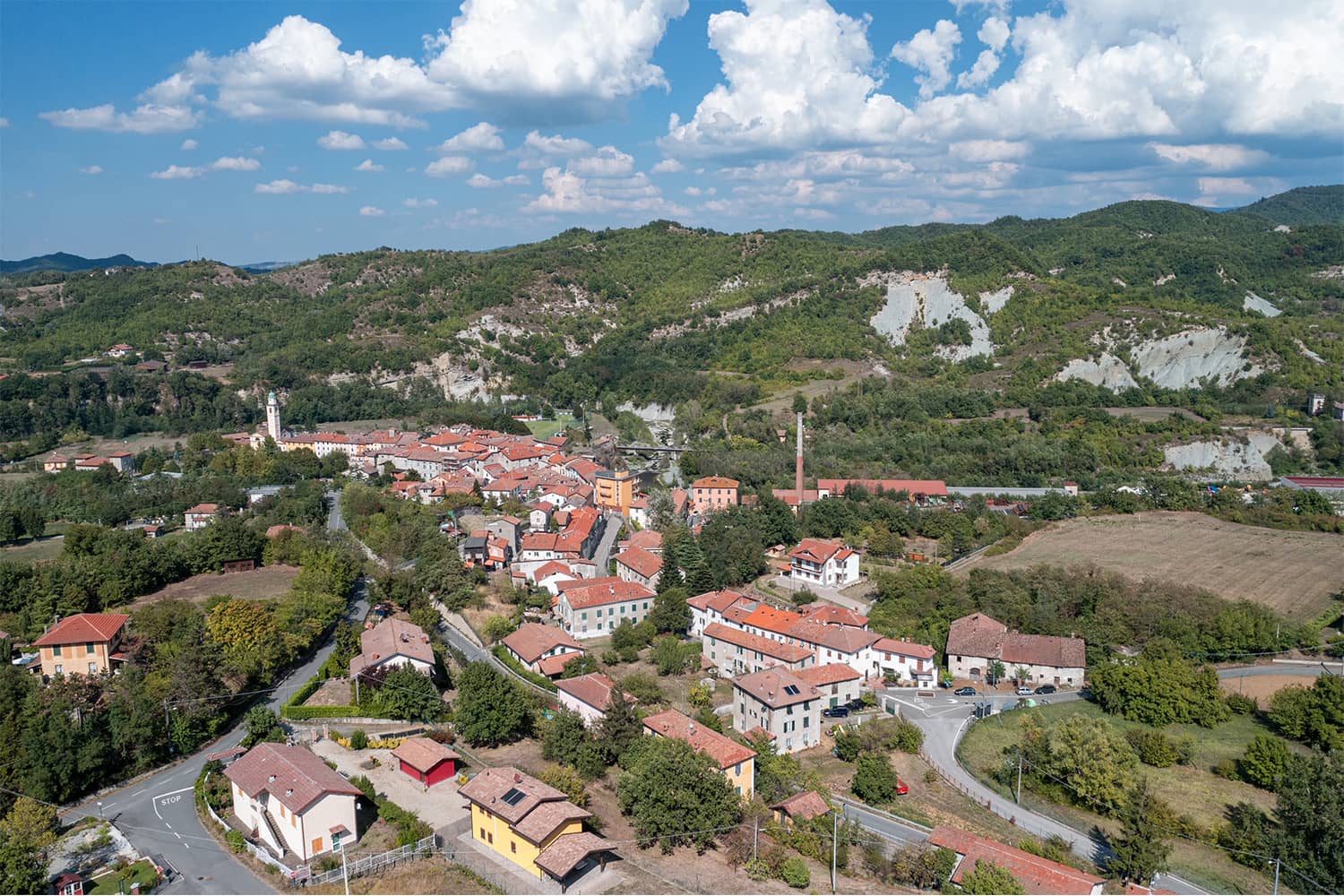
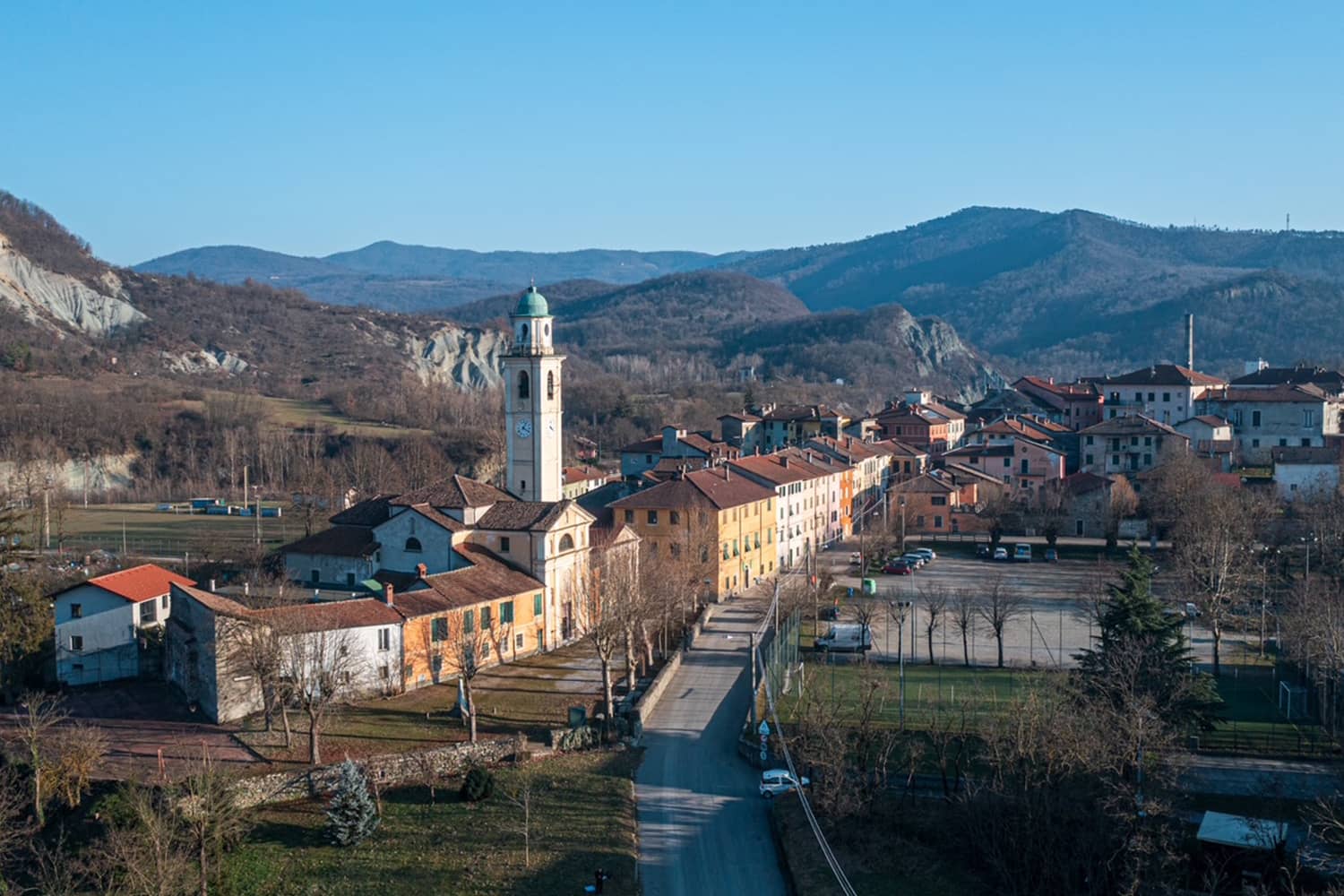
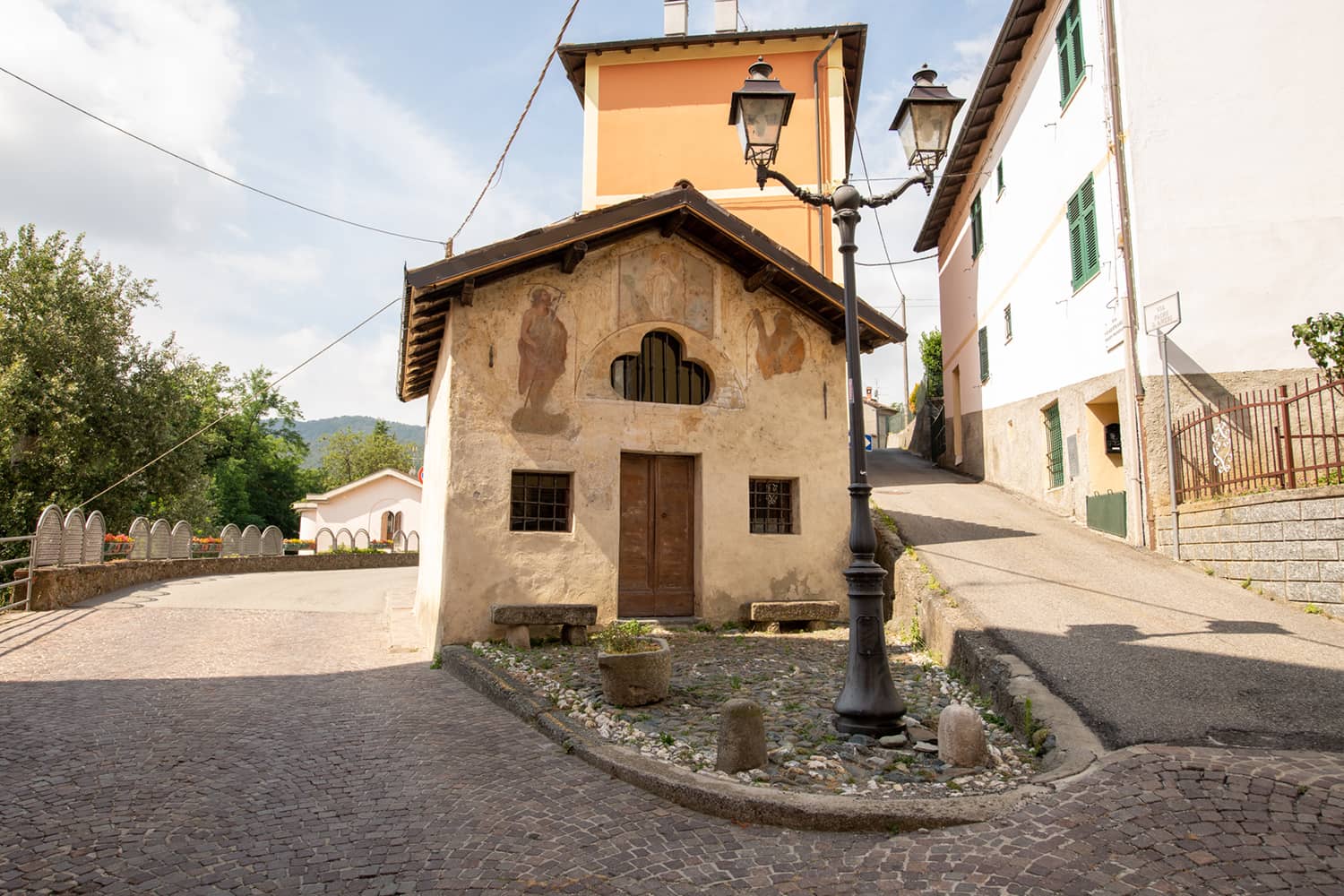
What to see in Carrosio
The Church dedicated to St. Mary of the Assumption, is first recorded in 1212 as a dependent of the Abbey in which it is still included. The present structure was built between 1675 and 1729.
The exterior has a two-order facade; the fresco on the pediment, painted by Luigi Gainotti in 1910, is illegible today. The Parma artist also frescoed the interior of the church between 1903 and 1910. The paintings in the church constitute the most significant body of wall paintings by the Master, depicting, at the end of the nave, the Gospel parables of the Good Samaritan and the Prodigal Son.
At the right altar, there is a polychrome wooden sculpture of the Assumption, a work of 18th-century Genoese craftsmanship.
In the side tabernacle of the chancel, there is a reliquary of the Holy Cross in embossed and chiseled silver, probably of Roman manufacture from the 17th century, donated to the church in 1716.
The oratory, which flanks the church, has a 17th-century structure and is the seat of the Congregation of the same name, documented from November 29, 1645 with the “Chapter” approved by a Papal Bull of Pope Innocent X on July 6, 1648; this finding is kept within the archives of the Confraternity.
The single-nave, barrel-vaulted interior preserves some objects of worship that are of artistic merit: two 18th-century processional staffs decorated with figures of saints; two Christs of 19th-century Ligurian manufacture; the old gonfalon painted on both sides; and two 18th-century wooden processional street lamps;
And, finally, the canvas depicting the martyrdom of St. Stephen by the workshop of Domenico Fiasella;
In the Municipality of Carrosio, in addition to the presence of spots where you can come across fossils of small sea creatures, you can visit one of the most important geosites at the national and community levels.
Millions of years ago, the Po Valley was an immense lake: when the waters began to recede, almost complete coverage of what was the seafloor took place; but there are places where the transition from one geological era to the next is still clearly visible in the rock outcrops. The International Commission on Stratigraphy has certified about 701 of them worldwide, including 9 in Italy. The Carrosio geosite dates to about 23 million years ago.
The geosite is a destination for many geology enthusiasts, as the Section is free of tectonic disturbances, has good exposure and is easily accessible by visitors.
